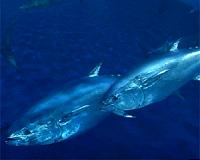| . |  |
. |
London UK (SPX) Oct 27, 2010 Sea levels around the Falkland Islands in the South Atlantic have risen since the mid nineteenth century and the rate of sea-level rise has accelerated over recent decades, according to newly published research. The findings are as expected under global warming and consistent with observations elsewhere around the globe. "We have been fortunate in being able to compare modern sea-level measurements obtained from tide gauges and from satellite radar altimeters with historical measurements made at Port Louis in the Falkland Islands in 1842," explained researcher Prof. Philip Woodworth of the National Oceanography Centre. In 1839, distinguished naval officer and polar explorer James Clark Ross (1800-1862) set off on an expedition to the Southern Ocean with two ships, HMS Erebus and HMS Terror. In April 1842, he stopped at Port Louis, primarily to make magnetic field and other measurements, but also to make repairs to his ships which had been badly damaged in the Drake Passage. Having set up a winter base, he took the opportunity to make careful measurements of sea level relative to two benchmarks cut into the cliffs and marked with brass plaques. These marks remain in good condition to this day. This fact, along with the apparent good quality of Ross's data, has allowed Woodworth's team to compare the sea level records from 1842 with measurements taken at Port Louis using modern instruments in 1981-1982, 1984 and 2009. They also used information from nearby Port Stanley, where a permanent tide gauge was operated in the 1960s and 1970s and where NOC has had an operational gauge since 1992. After correction for air pressure effects and vertical land movement due to geological processes, the researchers find that sea levels rose by an average of around 0.75 millimetres a year between 1842 and the early 1980s. They point out that this figure is similar to previous estimates for the long-term rate of sea-level rise at Port Arthurin Tasmania, measurements with which Ross was also associated, and at other locations in the Northern and Southern Hemispheres. However, they also find evidence that the rate of sea-level rise has accelerated over recent decades. Specifically, they estimate that sea levels around the Falkland Islands have risen by an average of around 2.5 millimetres a year since 1992, a figure consistent with measurements made by satellite radar altimeters over the same period. Longer-term data from the Falklands, and from many other locations, are needed to establish whether the apparent acceleration in sea-level rise is due to increased global warming, or the result of some kind of decadal fluctuation. "The benchmarks left by James Clark Ross on the cliffs of Port Louis will facilitate future studies of sea-level change - just as Ross intended," said Woodworth. The researchers are Philip Woodworth and David Pugh (National Oceanography Centre), and Richard Bingley (Instituteof Engineering Surveying and Space Geodesy, University of Nottingham). Woodworth, P. L., Pugh, D. T. and Bingley, R. M. Long-term and recent changes in sea level in the Falkland Islands. J. Geophys. Res. 115, C09025 (2010). doi:10.1029/2010JC006113
Share This Article With Planet Earth
Related Links - Water News - Science, Technology and Politics
 European nations sink bluefin tuna quota reduction
European nations sink bluefin tuna quota reductionLuxembourg (AFP) Oct 26, 2010 Europe's Mediterranean nations roundly rejected on Tuesday a proposal by the EU's executive arm to slash the global quota for catching the lucrative sushi mainstay of bluefin tuna next year. Fisheries ministers meeting in Luxembourg made their position known three weeks ahead of an international meeting of fishing nations on bluefin tuna, a species scientists say is endangered. French Ag ... read more |
|
| The content herein, unless otherwise known to be public domain, are Copyright 1995-2010 - SpaceDaily. AFP and UPI Wire Stories are copyright Agence France-Presse and United Press International. ESA Portal Reports are copyright European Space Agency. All NASA sourced material is public domain. Additional copyrights may apply in whole or part to other bona fide parties. Advertising does not imply endorsement,agreement or approval of any opinions, statements or information provided by SpaceDaily on any Web page published or hosted by SpaceDaily. Privacy Statement |